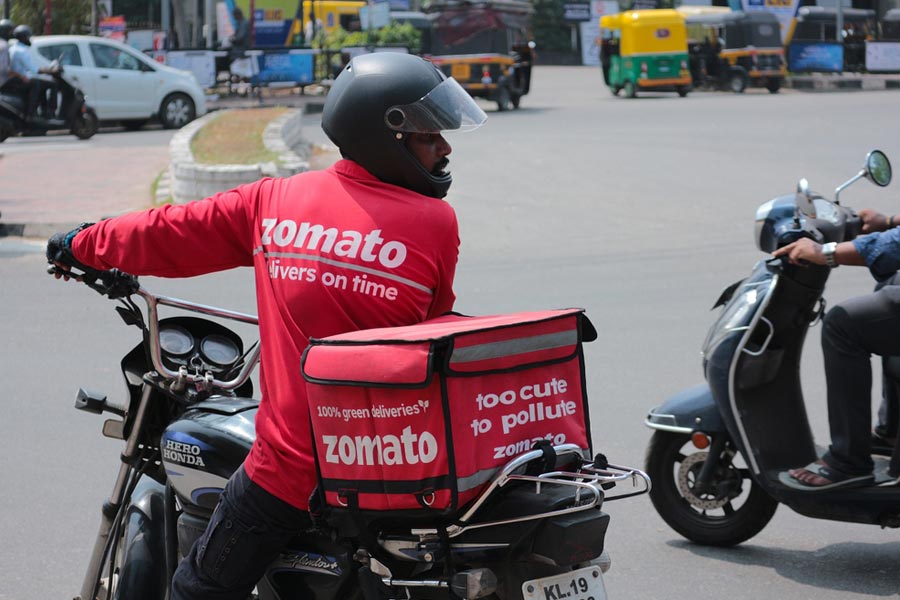 |
Back in the Seventies, Dilip Kapur wanted to change the world. He was, after all, a 20-something living in the US, caught in the turbulence of the post-Vietnam counter-culture wave. Only, revolution was easier sung about than done. And for the millions of youth fed on flower power, it wasn’t long before life was back to its boring best. Unlike the rest of his brigade, though, Kapur did not see alternative living as a passing fad and had no intention of falling in line. Almost three decades later, Kapur still believes in ‘being different’. But now, in his mid-Fifties, he lets his bags do most of the talking for him.
Hidesign, the one-man venture Kapur floated out of his house in 1978, is now a global trendsetter in the leather fashion accessories segment, with international sales hovering around Rs 200 crore.
“It started more as a hobby than anything else,” says Kapur of his occupation, the basics of which he picked up during his PhD years at the School of International Studies in Denver. “I had joined the programme after graduating in international affairs from Princeton University,” he says.
“I had a scholarship for four years, but a thesis generally took about seven years to complete. Through the last three years of our course, we had to do odd jobs to keep ourselves going.” It was during a nine-month stint at a leather house called Poor Richards in Denver that Kapur was initiated into the art of leather craft.
In 1977, after completing his studies, Kapur returned to Auroville, Pondicherry, where he had spent his childhood. “It was a personal choice. Auroville was a cosmopolitan place, and had an international community that a thoroughly Americanised person like me could belong to,” he says.
There was only one problem. Once back in the sleepy south Indian town, Kapur didn’t have anything to do. To beat boredom, he sat down with an artisan and literally hammered out his first leather bag. Another six bags followed. Then, a German friend said she could model the bags for a European catalogue. “The move clicked. I landed an order from a German house for 1,400 bags, 200 of each design,” says Kapur. With increasing demand from the foreign market, Kapur was pressed into expanding his workshop. Soon, there were about 200 people working under four roofs.
“We moved into our first factory in 1990,” Kapur recalls. As his company grew, Kapur had to add to his skills. “There was a time when I didn’t know how to read a profit-and-loss account,” he laughs. “It wasn’t until much later that I caught hold of a few young MBAs and got them to teach me.”
Kapur has not, however, imbibed the wrong elements of business. “My motto throughout was to be able to design my own products by drawing on the core values of life,” he says. “There were certain ideals we could never compromise on.”
Concern for the environment is one such value. “I had no intention of polluting the environment,” Kapur stresses. So traditional, eco-friendly methods of treating leather such as vegetable tanning and dyeing of hides in pits and wooden drums were focussed on. Quality was another element on which no compromises were done.
“We were among the first few companies to introduce solid brass fittings on products,” he says. After having created waves in avant garde boutiques in fashion hotspots such as San Francisco, New York, and London, Kapur decided to turn his attention to the Indian market in 2000. The move paid off and Hidesign met with instant success in India. “Ever since we began retailing in India, we have registered a 60 per cent annual growth every year,” Kapur claims.
Hidesign today dishes out a wide range of products, including briefcases, travel bags, handbags, backpacks and accessories such as belts, jackets, and wallets to a discerning clientele worldwide. And Kapur backs up quality with solid customer care and after-sales services, tending to products long after they have left the shelves. These days, apart from spending quality time in his seven-acre establishment in Pondicherry, Kapur makes it a point to visit the Aurobindo Ashram in Auroville on Fridays to teach international affairs to students there.
Besides, he is planning to get showroom space on 3rd Street, Santa Monica. Also on the anvil are 10 more stores in India, adding to the 28 that already exist.
Kapur is not being over-ambitious, nor is he biting off more than he can chew. He’s just being different.











